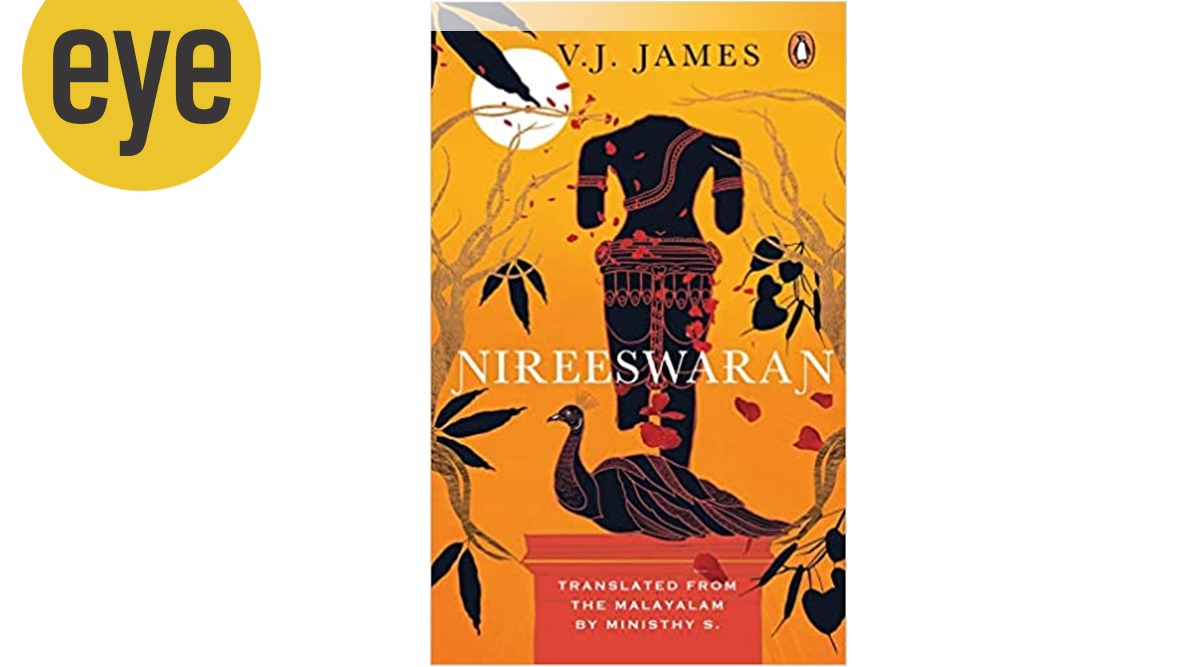 Nireeswaran by VJ James; translated from Malayalam to English by Ministhy S; Vintage Books; 320 pages; Rs 599. (Photo: Amazon.in)
Nireeswaran by VJ James; translated from Malayalam to English by Ministhy S; Vintage Books; 320 pages; Rs 599. (Photo: Amazon.in)Set in a village in Kerala, Vayalar and Kerala Sahitya Akademi winner VJ James’ novel, Nireeswaran, translated from Malayalam by Ministhy S, begins by unravelling the dichotomy between atheism and theism. The novel’s protagonists are difficult to identify as the story proceeds: it could be the three atheist friends, Anthony, Bhaskaran and Sahir, or the rational scientist, Roberto, or the man who wakes up after being in a coma for 24 years, Indrajit.
The disgruntled trio of atheists, cleverly bearing names from three prominent religions, inaugurate the novel with their plans to create an anti-god aka Nireeswaran. Tired of the prevalent religious myopia, the three, in their bid to overthrow religious superstition, create the anti-god with properties and characteristics that are ungodly. Nireeswaran, cast in stone, is consecrated on an inauspicious night by an erstwhile priest, who was outcast after being falsely accused of theft in the temple. The villagers are witness to the consecration of the headless, disproportionate anti-god with incomplete limbs. They take part in the event with the certainty that the sculpture is powerless, and make several appeals mockingly.
What follows is a series of inexplicable eventualities wherein the lives of the characters are thrown into a dilemma. The mock-prayers begin to get answered one by one, the anti-god’s cult gains momentum and the friends end up with a double whammy. The accessibility of the anti-god, devoid of caste, class or even religion, allows the tormented plebeian of the village a glimmer of hope. Towards the middle, the creators of Nireeswaran are now plotting to throw their own creation away into the local canal.
Subscriber Only Stories
James’ proscenium is the enormous Athmavu, deriving its name from ‘al’ and ‘maavu’ (peepal and mango trees in Malayalam, respectively), named locally by the villagers because of the amalgamation of the two trees at the site. The writer is conscious to use Kerala’s renowned “public spaces” like the stone seat under the giant tree and the barber’s shop as decisive sites where pertinent discussions and conspiracies happen.
 Nireeswaran is a timely piece of work, given the turmoil the world, and India, is caught in in these times. (Photo: Amazon.in)
Nireeswaran is a timely piece of work, given the turmoil the world, and India, is caught in in these times. (Photo: Amazon.in) In the backdrop of the events, James uses the subtext of the sex-worker Janaki’s friendship with Roberto, Indrajit’s confusion in waking up as a young man even after two decades of coma, and Roberto’s own quest as a scientist researching smells, to build on the philosophy of what one may understand as the ultimate truth. In Roberto’s character, one reads the struggle to accept science not merely as scientific but also conscientious. His dialogues constantly bring the idea of linearity of time and space, and the subsequent continuum, under scrutiny.
Even in the process of creating the anti-god, its creators are bound by limits and dimensions of what they understand as god, and the inevitability of Nireeswaran’s godliness. The novel does not seek to overthrow religious beliefs, nor is it bound by the arrogance of rationality. The cynosure of James’ writing lies in the nuance he brings to his characters, with his extremely intricate questioning of the truth in simple sentences. Ministhy, in her translation, allows for James’ plot to traverse in metaphors and symbolisms that are universal.
In Greek philosopher Plato’s Allegory of the Cave from his work The Republic, one encounters the dichotomy between the “effect of education and its lack in one’s nature”. In it, Socrates, Plato’s teacher, describes the plight of a group of people who have been limited by a wall inside a cave all their lives, making meanings of shadows they see on the wall and nothing more. He calls this the “prisoner’s reality and inaccurate representations of the real world”. James elaborately presents Plato’s case by bringing in discourses of religion, science, mathematics, and truth under one umbrella, which can both throw the reader’s psychology into a wrench and save it all at the same time. Where the plot might slightly weaken is when the narrator’s voice comes in, lending itself an opening at every scene. While it advances the plot in many directions, it also runs the risk of leaving little to the reader’s imagination.
Nireeswaran is a timely piece of work, given the turmoil the world, and India, is caught in in these times. It is the struggle between belief and disbelief, devotion and indifference, religion and rationality, philosophy and spirituality. As Roberto says in the novel, “A non-belief is also a belief”.
- The Indian Express website has been rated GREEN for its credibility and trustworthiness by Newsguard, a global service that rates news sources for their journalistic standards.

